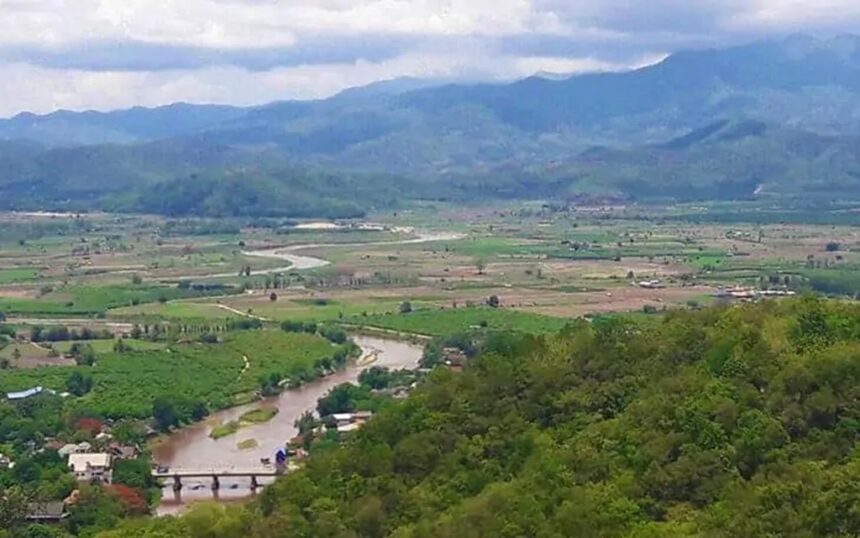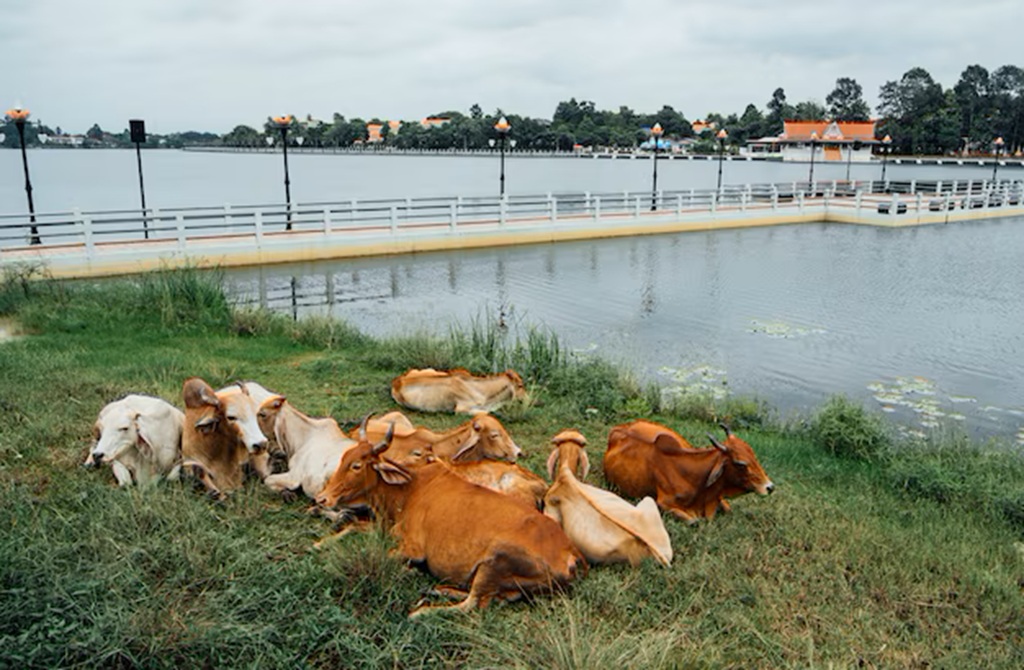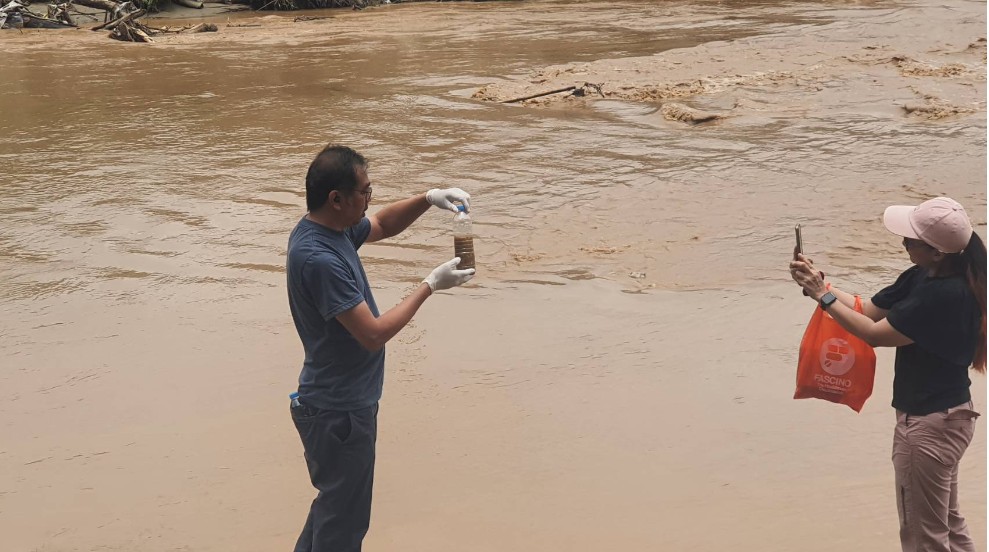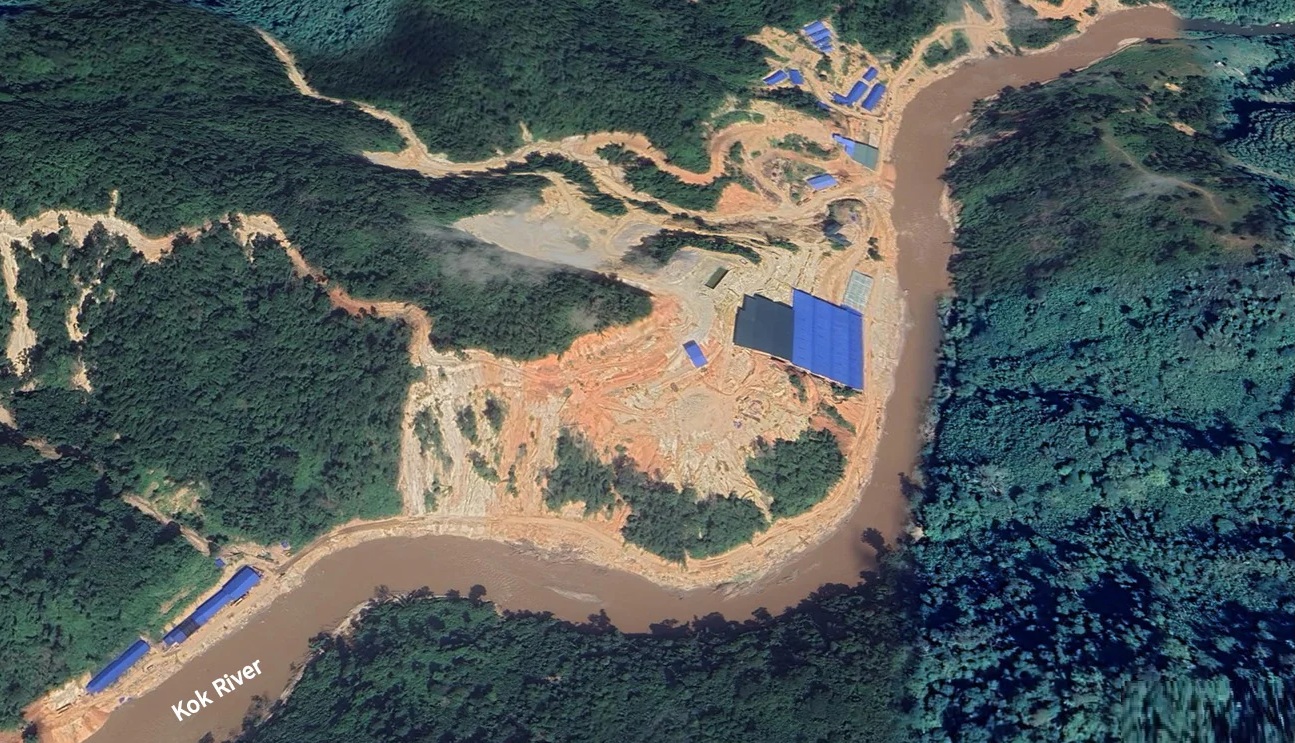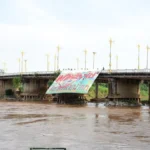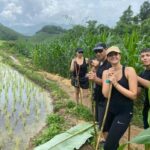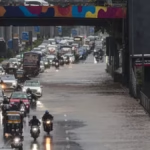CHIANG RAI – The Kok and Sai Rivers, central to farming in Chiang Rai Province, now bring worry instead of relief for local growers. Once a key source of water for rice fields and livestock, these rivers now hold high levels of arsenic and other harmful metals.
Farmers feel unsure about whether their crops or animals are safe.
The problem first came to light in March 2025. Since then, tests have shown arsenic levels far above Thailand’s legal limit of 0.01 mg/L. In Mae Ai district, Chiang Mai, water held 0.026 mg/L of arsenic. At the Thai-Myanmar border, sediment contained as much as 33 mg/kg.
The Sai River, which flows into the Kok, gave even higher results: near Ban Pa Sang Ngam in Mae Sai district, the level spiked to 0.49 mg/L, which is almost 50 times above the safety standard.
Reports from the Office of Environmental and Pollution Control Region 1, along with research from Mae Fah Luang University, link the pollution to gold mining over the border in Myanmar’s Shan State, where Chinese-backed operations pour untreated waste into the river system.
Farmers such as Thanet Maneekorn, who grows rice in Ban Huai Kum, feel the impact daily. He has stopped using river water, but his fields already show damage. “No one tells us if the soil or groundwater is safe,” he said.
“How can we keep farming or feed our families?” Others, like Supin Kamjai, echo his worries. Crops are at risk, and there’s fear about letting cattle graze near the river. Many depend on these rivers for farming, fishing, and basic living.
Chiang Rai Farmers Worry Over Livestock
The threat goes beyond rice. Cattle have collapsed after drinking from polluted streams in Myanmar. In Chiang Rai, farmers worry that animals could take in arsenic from grazing near the river, or that fish might not be safe to eat.
“We don’t know if we can trust the food we grow or catch,” said Jinda Inkham from Ruammitr village. While officials say tap water is safe, many worry about arsenic building up in the food chain. Test results take time, which has made people less trusting.
In Chiang Rai, farmers worry that animals could take in arsenic from grazing near the river, or that fish might not be safe to eat. “We don’t know if we can trust the food we grow or catch,” said Jinda Inkham from Ruammitr village.
While officials say tap water is safe, many worry about arsenic building up in the food chain. Test results take time, which has made people less trusting. Many in the area feel left in the dark by officials.
On 30 April 2025, Governor Charin Thongsuk ordered a ban on using water from the Kok and Sai Rivers for farming or drinking. But many rural families have no backup supply.
Community leader Boonsri Panasawangwong said, “the river is everything here. This ban changes our way of life, and there’s no clear help from the government.” People want urgent checks on their soil, crops, and animals, as well as longer-term help to clean up the rivers.
Is Water Safe for Farming
Recently, Dr. Suebsakun Kidnukorn from Mae Fah Luang University met with farmers in Wiang Chai, Chiang Rai, to discuss the situation. Many locals are anxious about the safety of the water they use every day on their farms, in their rice paddies, and for fishing.
Sueb Sakul said villagers are especially worried about toxins building up in their crops and fish. There’s a real fear that rice, leafy greens, or fish from these rivers could carry harmful substances.
Dr. Sakul wants the Ministry of Agriculture to give a straightforward answer: Is it safe to use river water for agriculture in the Kok, Sai, and Mekong basins? He pointed out that in a recent parliamentary meeting, authorities advised against using surface water, but this message hasn’t reached everyone.
If farmers can’t use river water, more than 58,000 rai of paddy fields in Chiang Rai will be at risk. This issue goes beyond the environment. It threatens food security and local incomes. He’s especially concerned for small farmers who can’t afford to drill wells for groundwater.
Installing new water systems is a big expense for families already struggling.
Mining Along the Kok River
The Thai government has made some moves, such as using satellite images to track the pollution and planning to add sediment traps to the Kok River. Deputy Prime Minister Prasert Jantararuangtong led a meeting to push for government coordination and talks with Myanmar.
But there is little progress, as Myanmar has not made any firm promises. Mining in the area is still controlled by the United Wa State Army.
Activists like Pianporn Deetes from International Rivers say the government has not done enough. “The poorest communities feel this most. They rely on local food, but there’s not enough testing,” she said. A public meeting is set for 5 June at Suan Tung and Lantern Park to push for more water testing and for financial help for those affected.
The crisis is already costing the area dearly. Farming in Chiang Rai, worth 45 billion baht a year, is at risk as farmers stop watering crops and buyers turn away. Tourism, about 35% of the local economy, is down too. The Karen Ruammit Elephant Camp has seen visitor numbers drop by 80% due to fears over water safety.
With the rainy season coming, concerns about even more pollution from mining runoff are growing. Dr Suebsakul Kidnukorn from Mae Fah Luang University has called for urgent action. “If mining pollution isn’t stopped, arsenic will keep coming down the river, harming people and animals.” For now, farmers across Chiang Rai wait, facing a toxic threat to both their land and their future.




